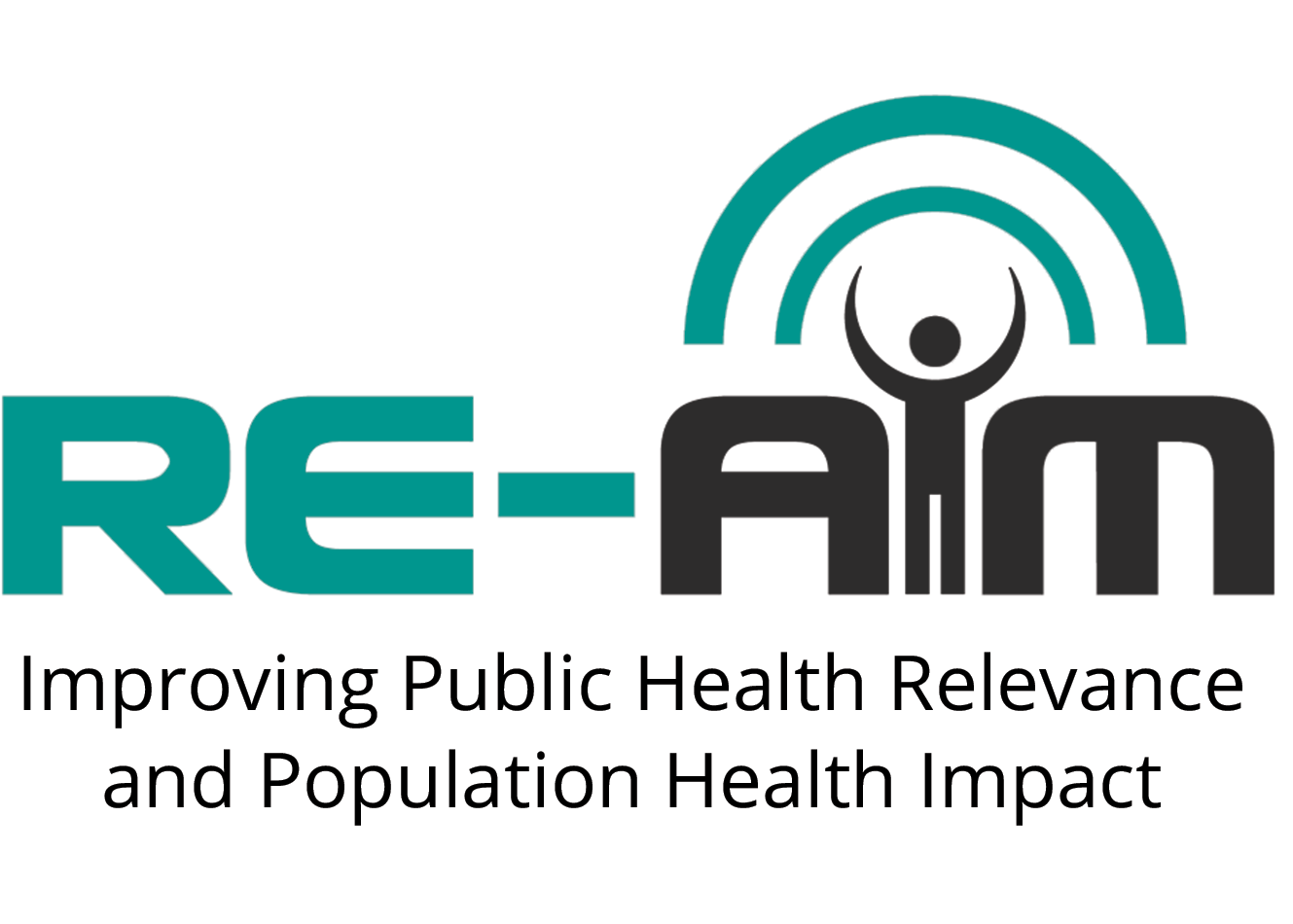ASSESSMENT using RE-AIM and PRISM
This section provides guidance on data collection using RE-AIM and PRISM. We posit that RE-AIM and PRISM can be used temporally (before, during, and after implementation), in different settings (clinic, community, corporate), with multiple levels of stakeholders, and for a variety of targeted audiences and outcomes. Depending on the phase of implementation, sources of data, and questions you are answering, either qualitative approaches, quantitative approaches, or mixed methods may be most appropriate. We strongly advocate mixed methods approaches in collecting and analyzing data about the RE-AIM dimensions and contextual factors in PRISM.
Navigation Links:
Questions to ask about RE-AIM Dimensions
KEY PEER-REVIEWED PAPERS HIGHLIGHTING APPROACHES TO ASSESSMENT USING RE-AIM AND PRISM:
Feldstein AC, Glasgow RE. A practical, robust implementation and sustainability model (PRISM) for integrating research findings into practice. Jt Comm J Qual Patient Saf. 2008 Apr;34(4):228-43. doi: 10.1016/s1553-7250(08)34030-6. PMID: 18468362. https://pubmed.ncbi.nlm.nih.gov/18468362/
QUESTIONS TO ASK ABOUT RE-AIM DIMENSIONS WHEN EVALUATING PROGRAMS AND POLICIES
CONSIDERATIONS FOR APPLYING RE-AIM DIMENSIONS ACROSS SETTINGS AND PHASES OF PROJECTS
QUALITATIVE DATA COLLECTION ASSESSING RE-AIM DIMENSIONS
Several focus group guides and individual interview guides have been graciously shared as examples of qualitative data collection tools that may be adapted for your use for research and practice, based on stakeholder priorities.
RE-AIM Workgroup Templates
The National Working Group on RE-AIM Planning and Evaluation Framework would like to share templates of focus group and one-on-one interview guides. These are by no means comprehensive of all styles and types of qualitative data collection, but rather a template for you to adapt based on your research and stakeholder priorities.
- Template for Participant Focus Group Pre-Implementation
- Template for Participant One-On-One During Implementation
- Template for Participant Focus Group After Implementation
- Template for Research Team One-on-One Pre-Implementation
- Template for Staff Focus Group During Implementation
- Template for Stakeholder One-on-One After Implementation
Example Qualitative Data Collection Tools
Some of our colleagues have graciously shared their qualitative data collection tools. We are in the process of compiling this information for upload. These are the intellectual property of the research team but available for your perusal. Contact information was up to date upon posting. Please email Samantha Harden if there are issues.
Topic | Resources | Scope | Contact |
Implementing alcohol | 1. Key Informant Interview Guide |
| Diane |
The “I Decide” team | Patient and staff |
| Daniel |
Weight Management | Focus group pre-mortem script- | Medical student project, | Shannon |
Older Ghanaian Adults’ | Balis L, Sowatey G, | Laura |
QUANTITATIVE DATA COLLECTION ASSESSING RE-AIM DIMENSIONS
An advantage of RE-AIM is that many of the quantitative outcomes in the RE-AIM dimensions are objective and countable (e.g., number of individuals who received the program out of those who could benefit from it). Others may require quantitative measures (e.g., assessment of fidelity of implementation of a program or intervention). Any quantitative data collection used should be as pragmatic as possible to reduce burden on program participants, interventionists, administrators, and other stakeholders. Examples of important data that can be tracked quantitatively within each RE-AIM domain are:RE-AIM Dimension | Definition | Examples of Quantitative Assessment | Important Considerations |
Reach | The number of people and percent of the target population who are impacted, and the extent to which those reached are representative and include those at most risk. |
|
|
Effectiveness | A measure of the impact on health, mental health, or other individual-level primary outcome, including positive, negative, and unintended consequences. |
|
|
Adoption | The number and percent of settings/providers/interventionists who participate, and the extent to which these are representative of those who the target population will use or visit. |
|
|
Implementation | Level of adherence to program delivery as intended, including extent to which elements are implemented and/or adapted. Cost of delivering the program. |
|
|
Maintenance | The degree to which the program is sustained (at the setting level) and to which the effects of the program are maintained (at the individual level). |
|
|
